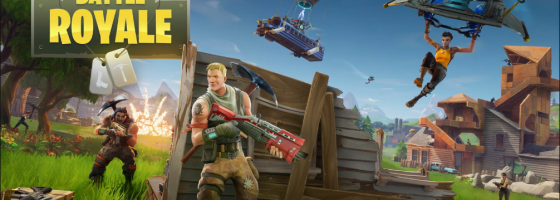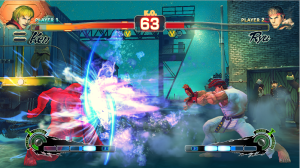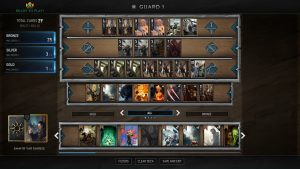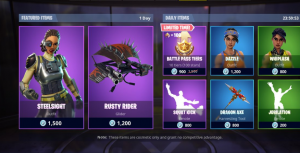Recently there was some very interesting news out of the Battle Royale genre. It has been reported that Epic Games is going all in with trying to turn Fortnite into the next big Esport, with an announced 100 million dollar price pool for competition funding this year. The Battle Royale, or more specifically, Fortnite scene has grown rapidly over this year. While there is plenty of interest in watching streamers play, I don’t think there is as big of an Esports market as people are hoping for.
Esports Worthy:
In previous talks, we’ve discussed the concept of a game being “Esports Friendly” and what that means from a design perspective. At a basic level, the game must be designed around competition and the player’s skills being the deciding factor. With the overall growth of the market, we can break things down into four distinct areas that make up the best Esports; before talking about how they apply to Fortnite.
1: Skill Ceiling
A key part of the competitive scene is a game having a high enough skill ceiling to accommodate all the players. The game has to be presented easy enough for someone new to jump in, but still have the depth to separate great players from the masters.
Not only that, but skill must always trump everything else in the end. Nobody should be able to spend money to either give them an advantage or be an easy shortcut to the top of the ladder. A good Esport game should be playable at different skill levels; which is also essential for any kind of ELO matchmaking and ranking.
The point is that while everybody will not become an expert player, the game is still easy enough to follow and understand so that fans can play it at their level, and watch the grandmasters at work.
2: Presentation
Speaking of watching people, presentation has been one of the most important (and hardest) elements to do for Esports. One of the major elements to the success of fighting games as an Esport has been how easy they are to watch and comprehend what’s going on. They’re the closest analog to watching a traditional sport on TV that the Game Industry has; outside of simulated sport titles.
One of the biggest challenges developers have faced with making their game Esports friendly has been trying to balance the player’s UI with the audience’s. Outside of fighting and sports games, you can’t just take the player’s UI and post it up on the big screen for people to watch.
Not only that, but you need people commentating not only on what’s going on, but explaining what that means for the rest of the match.
While this is easy to do with fighting games, it’s a different story when we’re talking about team-based titles like MOBAs or RTS. This is often why many Esports titles will have custom-made “broadcaster modes” for tournament and match coverage.
3: “X Factor”
The X Factor represents what each individual player brings to the sport. This is a combination of personality and skill. The idea is that while the top players are obviously masters at the game, they each have something unique in how they play. Maybe one person plays as Akuma in a special way, or builds their Nilfgaard deck with a few cards that no one else uses.
We can even talk about personalities like Justin Wong, Sonicfox, and Ninja with the energy and personality they bring when they play. Even though every player is using the same exact abstracted elements, the X Factor is what keeps the different plays from becoming mechanical.
The game’s design must be varied enough to allow for people to create their own specializations, and this is different from having a high skill ceiling. If grand master play of your title has very little or no variance to it, then it doesn’t really matter who is playing the game.
There is also the difference in playing against casual players vs. experts when we talk about the X Factor. Expert vs. expert matches will not make use of tactics that work during casual plays, because both players already know how to respond to it. This is also the reason why it is different to watch casual vs. expert plays.
4: The Meta
The last point has to do with the developers changing up the Meta, or state of what’s popular in any Esport game. Fighting a solidified Meta is a never ending job for developers. They have to keep the game changing, but also make sure that the core concepts don’t break.
Without a change to the Meta, all play will be built around what the current best strategy is and nothing else. This is why in CCG communities, companies will ban or restrict cards from tournament play to prevent obvious (and often overpowered) strategies from being used.
The goal is that nothing should ever become the one and only best strategy in a game. Not only that, but the game must continue to receive new content and gameplay options.
With all that said, let’s talk about my concerns with the push to making Fortnite an Esport.
Keeping Interest:
Fortnite when compared to the four aspects has both hits and misses. From a skill ceiling point of view, the combination of building structures and third person shooting does require a lot of balancing on the player’s part. Just being good at one or the other is not going to be enough if you want to win matches.
However, beyond good APM (actions per minute) skills, there isn’t a lot to Fortnite in terms of depth. From the matches I’ve seen and witness, high level play doesn’t really change from play to play. This is due to the chaotic nature of the game that may make it great to watch, but also provides issues for presentation.
The first big knock against Fortnite has to do with presenting it to an audience. While Fortnite from an aesthetics point of view is distinctive, it is an absolute mess to broadcast a match. With that said, I know a lot of people are going to comment below saying they love watching their favorite streamers, but that’s the point.
An Esports version of Fortnite is not about watching one person, but watching the entire match play out. Anyone knows that the Battle Royale genre’s pacing has peaks and valleys to it. Getting people to care about everything, and not just the sizzle reel, is a tall order. Like-wise, having commentators who can properly keep the audience informed about the match remains to be seen.
Keeping Them Coming Back:
With the X-Factor, Fortnite, and any other Battle Royale game has half the equation: The players. Given the need to keep the audience entertained during the downtime, the best players are those that are not only good at the game, but have an engaging personality as well.
That said, the problem is that the game design doesn’t allow that to translate into gameplay like other Esports titles. There are no classes, choices, or any element of customized abstraction when it comes to grand master play. The only that that really separates the best players that someone can see are the cosmetic items they wear.
When a pro fighting game player switches characters or a CCG player changes decks, that is a huge shift in how the match plays out. High level play in a Battle Royale game has the same set of skills and strategies from match to match, without any variance.
And without that variance, it creates a big issue with shifting the Meta. It never takes expert players long to figure out and adapt to any changes to a game. This is why having those customizable elements is vital, because changing elements will also impact those strategies and options.
With a Battle Royale game, can anyone think of elements that could radically shift the Meta for an extended period? New weapons and maps are good answers, but it won’t take players long to adapt and then solidify the Meta. One of the reasons that led to the decline of Starcraft 2’s popularity as a major Esport was how rigid the game’s Meta became. Grandmaster play was more about build memorization and execution, as opposed to playing the game at match time. This led to matches starting to look the same.
In a game like CS:GO, a new map or a weapon does dramatically change the Meta, because of how much it impacts strategies and tactics for both teams.
The one positive for Battle Royale is that without having elements that can change drastically, the genre doesn’t have to worry about alienating new players over time.
The Future of Battle Royale:
We are nowhere near the end of the Battle Royale craze. With Fortnite officially on every major platform, and multiple Battle Royale games still on the horizon, it’s going to be very interesting to see how this all pans out in a year from now.
Time will tell if this is the start of a brand new Esport-level game, or a repeat of the MMO crash of the last decade.
*Already timed to the start of the talk*
ends at 1:08:20





